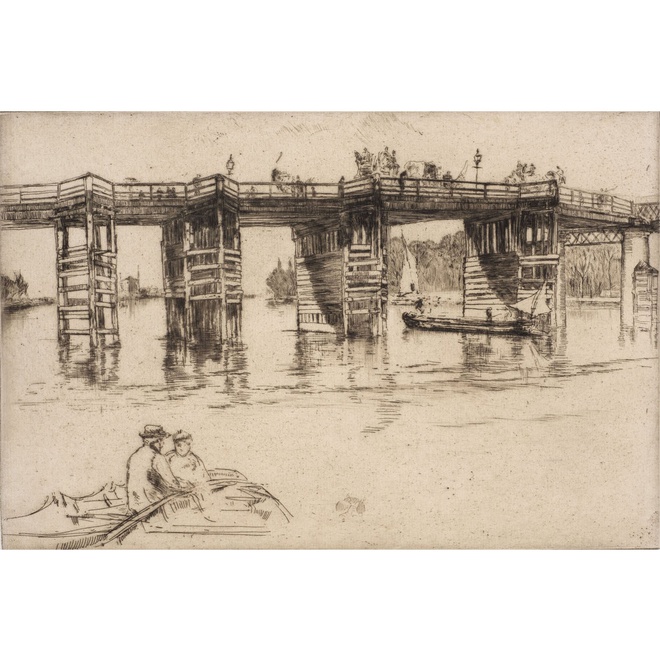A display of works by James McNeill Whistler and Walter Richard Sickert, two artists closely connected to the development of British Modernism.
Whistler was Sickert’s mentor and friend during the early years of Sickert’s artistic career. Sickert attended Whistler’s studio daily, often sketching and painting Whistler’s subjects. Sickert’s palette, too, was influenced by Whistler, in his choice of subdued, muted colours restricted to a few tones. In bringing together a selection of paintings, prints, and drawings by both artists, the viewer will be able to consider the similarities, influences, and points of divergence between mentor and mentee.
James McNeill Whistler was one of the first and most illustrious artists to show in our galleries. Whistler excelled as a painter in oils and in watercolour, and as an etcher and a lithographer. He made a stand for the cause of art for art’s sake, and this cost him dear. Although he won the case, he was bankrupted by the costs of his libel action against the critic John Ruskin who accused him of ‘flinging a pot of paint in the public’s face’. In an effort to help him recover from this loss, the gallery invited Whistler to stage his sensational show of Venetian prints called Arrangement in White and Yellow in 1883. The principles of his radical exhibition design still guide curators today, more than 130 years later. The walls of the ground-floor galleries of The Fine Art Society were filled with his etchings, floating in their mounts in white frames on walls covered with white felt.
Walter Sickert was equally influential in the history of British art around the turn of the century. A painter and etcher of portraits, figures and townscapes, Sickert studied at the Slade School of Art, London, in 1881 under Whistler, before becoming his assistant. Whistler was Walter Sickert’s mentor and friend during the early years of Sickert’s artistic career. Sickert attended Whistler’s studio daily, often sketching and painting Whistler’s subjects. Sickert’s palette, too, was influenced by Whistler, in his choice of subdued, muted colours restricted to a few tones. Sickert went on to spend many years travelling and painting in France, before returning to England in 1905 and establishing the Camden Town Group a few years later. This group, sometimes referred to as English Post-Impressionists, had different styles, but shared a commitment to an objective examination of everyday life.
| Duration | 11 July 2017 - 03 August 2017 |
| Times | Mon to Fri 10 - 6pm |
| Cost | Free |
| Venue | The Fine Art Society |
| Address | 148 New Bond Street, London, W1S 2JT |
| Contact | 020 7629 5116 / art@faslondon.com / www.faslondon.com |

